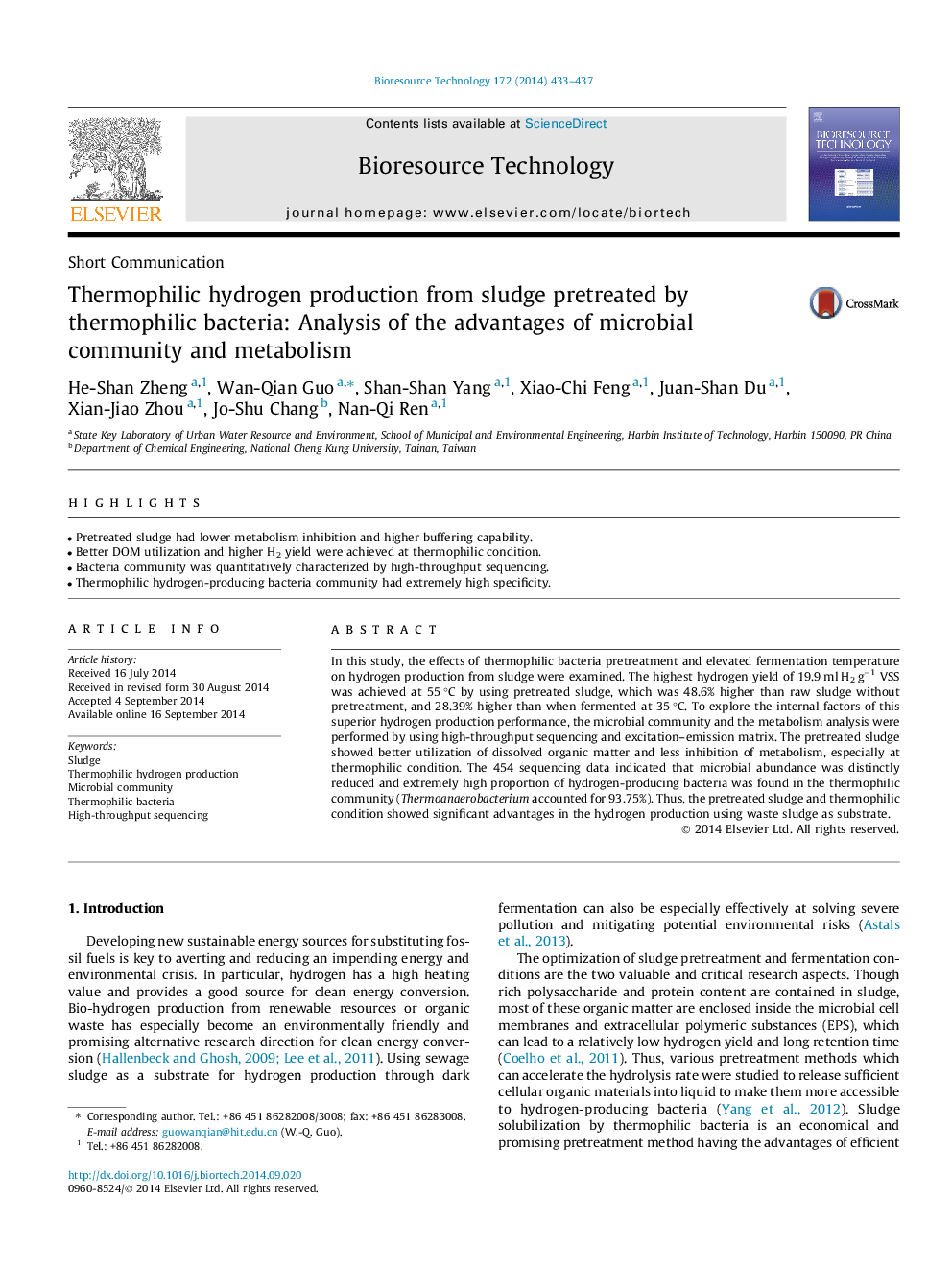| Article ID | Journal | Published Year | Pages | File Type |
|---|---|---|---|---|
| 680549 | Bioresource Technology | 2014 | 5 Pages |
•Pretreated sludge had lower metabolism inhibition and higher buffering capability.•Better DOM utilization and higher H2 yield were achieved at thermophilic condition.•Bacteria community was quantitatively characterized by high-throughput sequencing.•Thermophilic hydrogen-producing bacteria community had extremely high specificity.
In this study, the effects of thermophilic bacteria pretreatment and elevated fermentation temperature on hydrogen production from sludge were examined. The highest hydrogen yield of 19.9 ml H2 g−1 VSS was achieved at 55 °C by using pretreated sludge, which was 48.6% higher than raw sludge without pretreatment, and 28.39% higher than when fermented at 35 °C. To explore the internal factors of this superior hydrogen production performance, the microbial community and the metabolism analysis were performed by using high-throughput sequencing and excitation–emission matrix. The pretreated sludge showed better utilization of dissolved organic matter and less inhibition of metabolism, especially at thermophilic condition. The 454 sequencing data indicated that microbial abundance was distinctly reduced and extremely high proportion of hydrogen-producing bacteria was found in the thermophilic community (Thermoanaerobacterium accounted for 93.75%). Thus, the pretreated sludge and thermophilic condition showed significant advantages in the hydrogen production using waste sludge as substrate.
